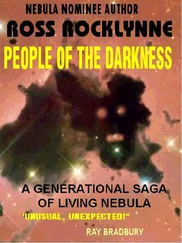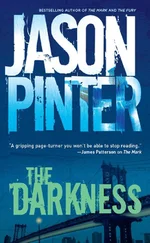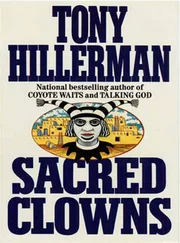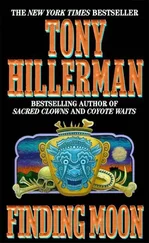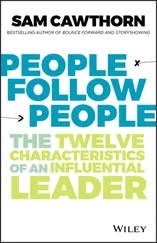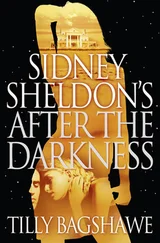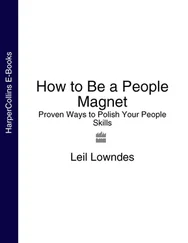
Tony Hillerman
People Of Darkness
Book one in the Jim Chee series, 1980
IT WAS A JOB which required waiting for cultures to grow, for toxins to develop, for antibodies to form, for reagents to react. And while she waited, the bacteriologist would roll her wheelchair to the windows and look down upon the world. The world below was the parking lot of the Cancer Research and Treatment Center, the neighbor of the bacteriologist’s Communicable Disease Laboratory on the University of New Mexico North Campus. It was a crowded lot, and a competitive one, and somewhere in the second year of watching it, the bacteriologist found herself familiar with its patterns. She knew when the meter maids made their rounds, and how long it usually took the tow truck to arrive, and what sort of violation provoked this ultimate punishment, and which vehicles tended to park illegally. She even knew of a romance which seemed to have flared between the female owner of a Datsun and the male owner of the blue Mercedes convertible that parked in the space reserved for one of the lofty administrators. Somewhere in that same second year she had started bringing her binoculars to the lab. She had finally left them there. They were in her hands now – focused upon a dirty green pickup truck which was nosing its way hesitatingly into a space guarded by a sign that read:
RESERVED FOR ASSOCIATE DIRECTOR
VIOLATORS WILL BE TOWED AT OWNERS EXPENSE
The bacteriologist had learned long ago that cancer patients tended to be scofflaws. They were dying and they knew it. In the face of that, other considerations became less important. But habits of civilized behavior still generally prevailed. It was rare to see such open defiance as the pickup was now demonstrating.
The defiant one was male, an Indian. Through the binoculars he didn’t look defiant. He looked stolid and sick. He climbed laboriously from the cab. The bacteriologist noticed a suitcase on the passenger’s seat and felt a sudden mild thrill of admiration. He was checking himself in, abandoning his truck forever to the mercies of the law. The nose thumbed at fate. But the Indian left the suitcase behind.
He was a large man, with the heavy torso and slender hips the bacteriologist had learned to identify with Navajos. He wore jeans and – despite the August heat – a denim jacket. He walked slowly toward the patients’ entrance – a sick man’s walk. He’ll check himself in, the bacteriologist thought, and then he’ll come back and get the suitcase, and move the truck.
Now there was another vehicle showing equally blatant illegality. It was a Chevrolet, silver-gray and new, which rolled past the green pickup and came to rest in the space reserved for the CRTC director. The driver’s door opened and a slender man emerged, dressed in white, a straw hat pushed back on his head. The man stood for a moment, apparently looking at the pickup truck. Then he walked around his car and opened the door on the passenger’s side. He leaned in, apparently working on something on the front seat. Finally he lifted out a grocery sack with its top folded down. He placed it on the bed of the pickup, among the boards and boxes against the cab. That done, he looked around him, studying the parking lot, the sidewalks, staring finally directly toward the bacteriologist. He was very blond, she saw. Almost an albino. Within a minute he was back in the gray Chevy, driving slowly away.
It was almost noon when the bacteriologist determined that the life form that had reproduced itself in her petri dish was not a food-poisoning salmonella but harmless nonpathogenic Escherichia coli . She made the required notes, completed the report, and pushed her chair back to the window. A tow truck had arrived. The bacteriologist focused her binoculars. The driver’s helper was completing the attachment of the towing bar to the rear of the green pickup. He waved his left hand and squatted beside the pickup wheel, watching something. The sound of the tow truck winch was lost to distance and insulated glass. But the bacteriologist could see the rear of the pickup begin to rise.
Abruptly, all vision was lost in a dazzle of light. The sound came a second later – a cannon-shot boom. The glass on the bacteriologist’s window was pressed inward to its tolerance and just beyond; it cracked, then flexed violently outward, where its shards joined those of a hundred other windows raining down on the empty sidewalks below.
THE RAIN CONVERTED ITSELF ABRUPTLY into a flurry of popcorn snow. It rattled off Jim Chee’s uniform hat, bounced down the collar of his uniform jacket, and made him shiver. It was the third day of November by the First National Bank of Grants calendar back on Chee’s desk, and the very beginning of the Season When the Thunder Sleeps by the less rigid traditional calendar of the Dinee. By either calendar it was too early for this sort of weather – even at this mile-and-a-half altitude on the slope of Mount Taylor. Howard Morgan had predicted possible snow flurries on his Channel 7 weathercast, but Chee hadn’t believed it. He’d left his winter coat back at the police station.
He glanced at his vehicle – a white Chevrolet with the seal of the Navajo Nation and the legend NAVAJO TRIBAL POLICE blazoned on its door. He could retire to the car and turn on the heater. He could seek shelter at the entryway of the residence of Benjamin J. Vines, and perhaps ring the bell a few more times in the hope of attracting someone. The bell made an odd singing sound which he could hear echoing pleasantly through the heavy door. While it had attracted no response at all, Chee was tempted to ring it again just to hear it. The third alternative was to turn up the collar of his jacket to ward off the sleet and continue satisfying his curiosity about this house. It had been designed, so he’d heard, by Frank Lloyd Wright, and was reputed to be the most expensive home in New Mexico. Chee’s curiosity about it, as about all things in the white man’s world, was intense. It was all the more intense at the moment because he might very soon enter that strange world. By December 10, less than five weeks away, he had to decide whether he would accept an appointment to the FBI, and a place in the world of singing doorbells.
He pulled his jacket collar around his neck, and folded down his hat brim, and continued his inspection. Chee was standing beside a semidetached triple garage. Like the house itself, it was built of native granite, linked to the structure by a low, curving wall of the same material. Just behind the wall, in a grassy plot no more than fifteen feet long, two small markers of black marble held Chee’s attention. Gravestones. He leaned over the wall. The name chiseled into the one just to the right of where Chee stood was DILLON CHARLEY. Under it, the legend read:
He Didn’t Remember When He Was Born
Died December 11, 1953
A Good Indian
Chee grinned. Was the sardonic double meaning intended? Was Vines, or whoever had ordered this legend carved, familiar with General Sheridan’s dictum that the only good Indian was a dead Indian?
The stone to Chee’s left read:
MRS. BENJAMIN J. VINES (ALICE)
Born April 13, 1909
Died June 4, 1949
A Faithful Woman
Faithful to B. J. Vines? It seemed an odd thing to put on a tombstone, but then everything about the white man’s burial customs seemed odd to Chee. The Navajos lacked this sentimentality about corpses. Death robbed the body of its value. Even its identity was lost with the departing chindi . What the ghost left behind was something to be disposed of with a minimum risk of contamination to the living. The names of the dead were left unspoken, certainly not carved in stone.
Читать дальше



